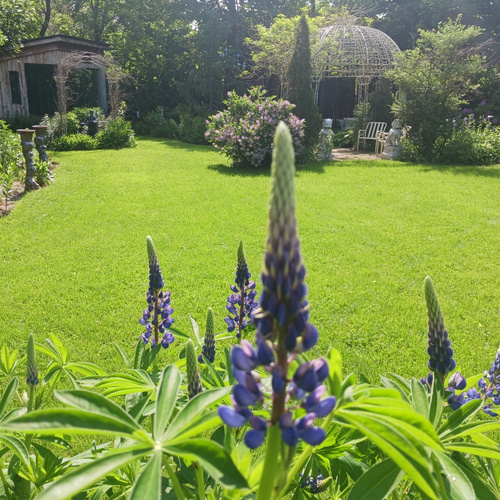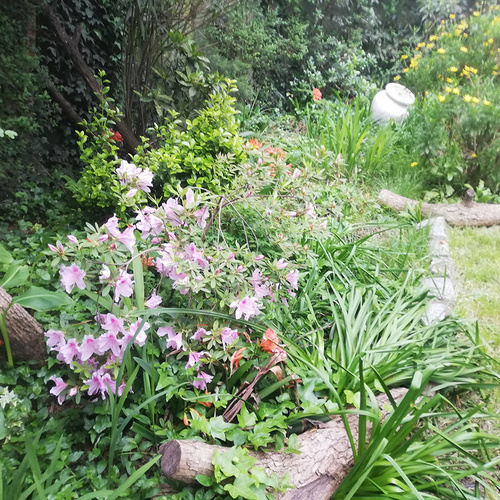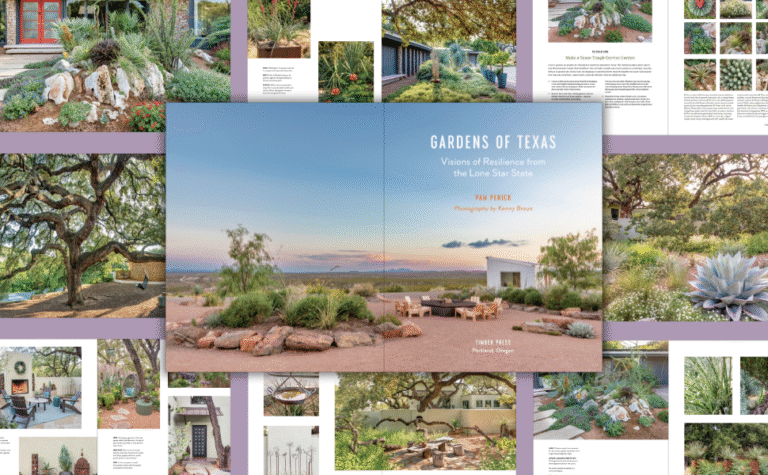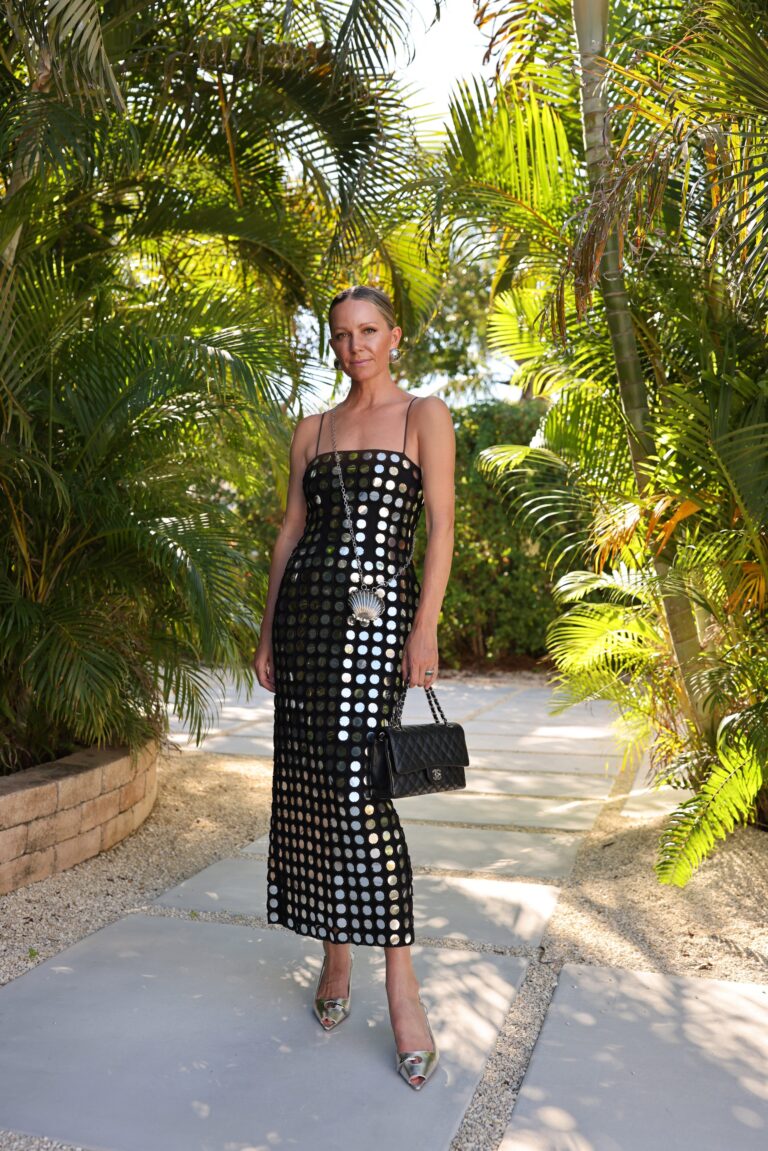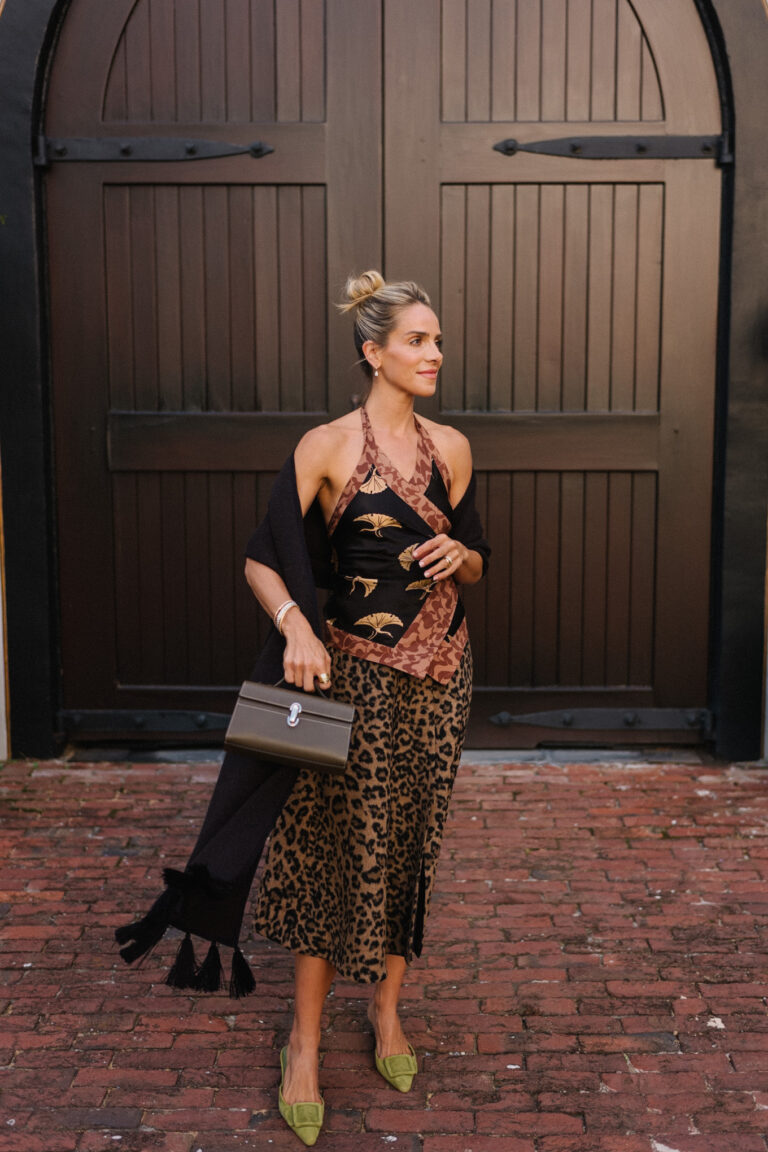Hi GPODers!
Lee from the Mohawk Valley of central New York State always has something colorful and creative to share from his garden (check out some of Lee’s previous submissions: There Is Always Room for More, Lee’s Garden Through the Eyes of an Ant, Chasing Away the Winter Blues with Lee in New York, Early Spring Blooms from the Mohawk Valley, Flower Close-Ups from Lee’s Garden). I never tire of seeing his incredible flowers and wonderful garden art, but what I really appreciate is the insight and words of wisdom he often includes. In today’s submission showcasing his spring highlights, he gives some perspective on his approach to gardening and drops a couple of beautiful life lessons in there as well.
Yup, it’s 2025—one year older (just entered another “decade of years”) and (hopefully) one year wiser. Speaking of wise, I find it wise to get out there early and get things cleaned up and ready for the sprouts. I find this critically important due to my gardens not having open places for footing, so getting the turf cleared early allows me to just watch things grow.
I have coined myself a “mix-’em-up” and “crowd” gardener because I realize that the plant- and bulb-growers SUGGEST specific plant-spacing. I’ve heard many suggestions in my life, and some I listen to and some I don’t. This specific suggestion—well, I don’t.
As my gardens continue to be dynamic and ever-changing, they all do have one thing in common—all of the plants in every garden have lots of friends. Friends take up space, and friends don’t let weeds sneak in. Many of my perennials spread by themselves, and others I split and place the kids elsewhere.
Once mid-June comes around, any weeds are looking elsewhere for footing and I’m then into official viewing-only mode. Mulch ? Nope—I like the natural turf (where it can be seen, ha). Color schemes? I don’t really focus too much on that—I haven’t found two colors of blooms that I could say, “You girls don’t belong together,” and sometimes those “weird” color combinations make a sort of asymmetrical statement—like someone who is wearing a nice suit but has blue hair. I guess that I’m just a rebel when it comes to conventional, traditional gardening with ultraclean lines and spacing. All of my perimeter plants on the property lines are on their own, with ostrich ferns (Matteuccia struthiopteris, Zones 3–7), wild daylilies, Solomon’s seal (Polygonatum humile, Zones 5–8), bachelor’s buttons (Centaurea cyanus, annual), wild phlox (which blooms well before “domestic phloxes”), wisteria, and the sweet, sweet smelling Hall’s honeysuckle (Lonicera japonica ‘Halliana’, Zones 4–11).
With that said, here’s a sampling of my little world for spring 2025. As always, I wish the best, most enjoyable, and most “successful” gardens for everyone—just don’t focus too much on that “success” part—it’s all in the eyes of the beholder. ONE, and ONLY one will know when their garden is a success.
As always, peace from the Mohawk Valley in central New York State.
 First up are Lee’s ostrich ferns with an incredible weigela in full bloom—potentially the cultivar Wine & Roses® (Weigela florida ‘Alexandra’, Zones 3–9), based on the dark burgundy foliage and bright pink flowers.
First up are Lee’s ostrich ferns with an incredible weigela in full bloom—potentially the cultivar Wine & Roses® (Weigela florida ‘Alexandra’, Zones 3–9), based on the dark burgundy foliage and bright pink flowers.
 Around Lee’s pool, some spires of lupine delight
Around Lee’s pool, some spires of lupine delight
 A little earlier in the season, the lupines were just starting to come into bloom. The rest of Lee’s garden is looking lush and inviting in the background.
A little earlier in the season, the lupines were just starting to come into bloom. The rest of Lee’s garden is looking lush and inviting in the background.
 Speaking of early in the season, Lee included this shot of some of his stellar spring bulbs. We often showcase Lee’s tulips on Garden Photo of the Day (Lee’s Tulips in Mohawk Valley), but these hyacinth (Hyacinthus orientalis, Zones 4–8) are equally enchanting.
Speaking of early in the season, Lee included this shot of some of his stellar spring bulbs. We often showcase Lee’s tulips on Garden Photo of the Day (Lee’s Tulips in Mohawk Valley), but these hyacinth (Hyacinthus orientalis, Zones 4–8) are equally enchanting.
 Along with the fragrant Hall’s honeysuckle that Lee mentions above, which has lovely yellow-and-white flowers, he also has a stunning orange honeysuckle (Lonicera ciliosa, Zones 4–9) that is covered in their more vibrant blossoms.
Along with the fragrant Hall’s honeysuckle that Lee mentions above, which has lovely yellow-and-white flowers, he also has a stunning orange honeysuckle (Lonicera ciliosa, Zones 4–9) that is covered in their more vibrant blossoms.
 If we’re talking fragrance, mock orange always gets top billing. These cascading branches of white blooms are lovely, but you know their sweet, citrusy scent is even more intoxicating.
If we’re talking fragrance, mock orange always gets top billing. These cascading branches of white blooms are lovely, but you know their sweet, citrusy scent is even more intoxicating.
 If you’ve enjoyed Lee’s garden in the past, you’ve likely been waiting patiently for some lily photos to make an appearance in this post. Lee has an incredible collection, and this variety is another standout. This vibrant but tiny variety might be the Lily Looks™ Tiny Orange Sensation Asiatic lily (Lilium ‘Tiny Orange Sensation’, Zones 3–9).
If you’ve enjoyed Lee’s garden in the past, you’ve likely been waiting patiently for some lily photos to make an appearance in this post. Lee has an incredible collection, and this variety is another standout. This vibrant but tiny variety might be the Lily Looks™ Tiny Orange Sensation Asiatic lily (Lilium ‘Tiny Orange Sensation’, Zones 3–9).
 From a smaller, low-growing variety to this flush of pink lilies dancing along with pops of orange rudbeckia blooms, Lee finds room for a diverse array of garden treasures.
From a smaller, low-growing variety to this flush of pink lilies dancing along with pops of orange rudbeckia blooms, Lee finds room for a diverse array of garden treasures.
 Lastly, another incredible lily, potentially the cultivar ‘Forever Susan’ (Lilium ‘Forever Susan’, Zones 4–8); lilies can bring some of the brightest, boldest color combinations to the garden, and somehow they look even more magical covered in water droplets after a fresh rain.
Lastly, another incredible lily, potentially the cultivar ‘Forever Susan’ (Lilium ‘Forever Susan’, Zones 4–8); lilies can bring some of the brightest, boldest color combinations to the garden, and somehow they look even more magical covered in water droplets after a fresh rain.
Thank you so much for another peek inside the wonderfully colorful world you have created, Lee! While you consider your approach unconventional, all we can see from your photos is enviable plant beauty.
What is your approach to gardening? Do you embrace the chaos like Lee, or does your mind go wild without a well-laid plan for each season? Let us know in the comments, or submit your garden to Garden Photo of the Day! Follow the directions below to submit photos via email, or send me a DM on Instagram: @agirlherdogandtheroad.
We want to see YOUR garden!
Have photos to share? We’d love to see your garden, a particular collection of plants you love, or a wonderful garden you had the chance to visit!
To submit, send 5–10 photos to [email protected] along with some information about the plants in the pictures and where you took the photos. We’d love to hear where you are located, how long you’ve been gardening, successes you are proud of, failures you learned from, hopes for the future, favorite plants, or funny stories from your garden.
Have a mobile phone? Tag your photos on Facebook, Instagram or Twitter with #FineGardening!
Do you receive the GPOD by email yet? Sign up here
Fine Gardening Recommended Products
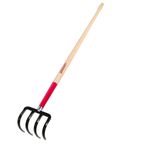
Razor-Back Potato/Refuse Hook
Fine Gardening receives a commission for items purchased through links on this site, including Amazon Associates and other affiliate advertising programs.
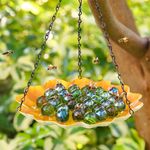
Bee Watering Station with Vivid Flower Design
Fine Gardening receives a commission for items purchased through links on this site, including Amazon Associates and other affiliate advertising programs.
Thoughtful Combo: You will receive a bee feeder and 30 glass marbles. This thoughtful combo can provide clean water for the bees, you just need to put the marbles into the bee watering station, add water (note: the water level should not exceed the height of the marbles) and hang them in the right place. The round, colored marbles can provide a place for the bees to stand and prevent them from falling into the water, effectively keeping the bees safe. Fine Material: This exquisite bee bath is made of high quality iron material, smooth surface, rust and weather resistant, not easy to fade, sturdy and reliable. Bee cups for garden can well meet the drinking water needs of lovely bees, and it can also provide food for bees, such as sugar water, nectar, etc., attracting more bees to your outdoor area and making your garden full of vitality. Perfect Size: The butterfly watering station has an overall height of 13.4 inches, a bowl diameter of 9.4 inches, and a weight of 0.44 pounds. The bee cup serves the needs of the bees well without plunging them into dangerously deep water or taking up unnecessary space in your garden, and this compact and efficient design makes it a practical addition to any outdoor space. Elegant Design: Our bee watering cups are designed in unique flower shapes with vibrant and realistic colours to attract lovely bees to your garden and patio, bee feeders for outside are not only functional but can also be used as a landscaping element, their vibrant floral patterns enhance the beauty of your garden. Multicolored Decoration: Colorful bee water stations look like flowers in a garden, flower bed or pot and attract bees and butterflies. They can drink or bathe in bee feeders, which are highly decorative and practical.
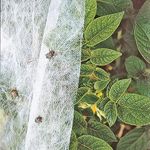
Gardener’s Supply Company Summerweight Fabric Plant Cover
Fine Gardening receives a commission for items purchased through links on this site, including Amazon Associates and other affiliate advertising programs.
Ideal for summertime pest control, this garden cover effectively screens out Japanese beetles, potato beetles, cabbage worms, leaf miners, carrot flies and most vine borers. It transmits 97.6% of the light to your plants without allowing heat build-up, and it provides cold protection down to 41° F, to extend your growing season.




